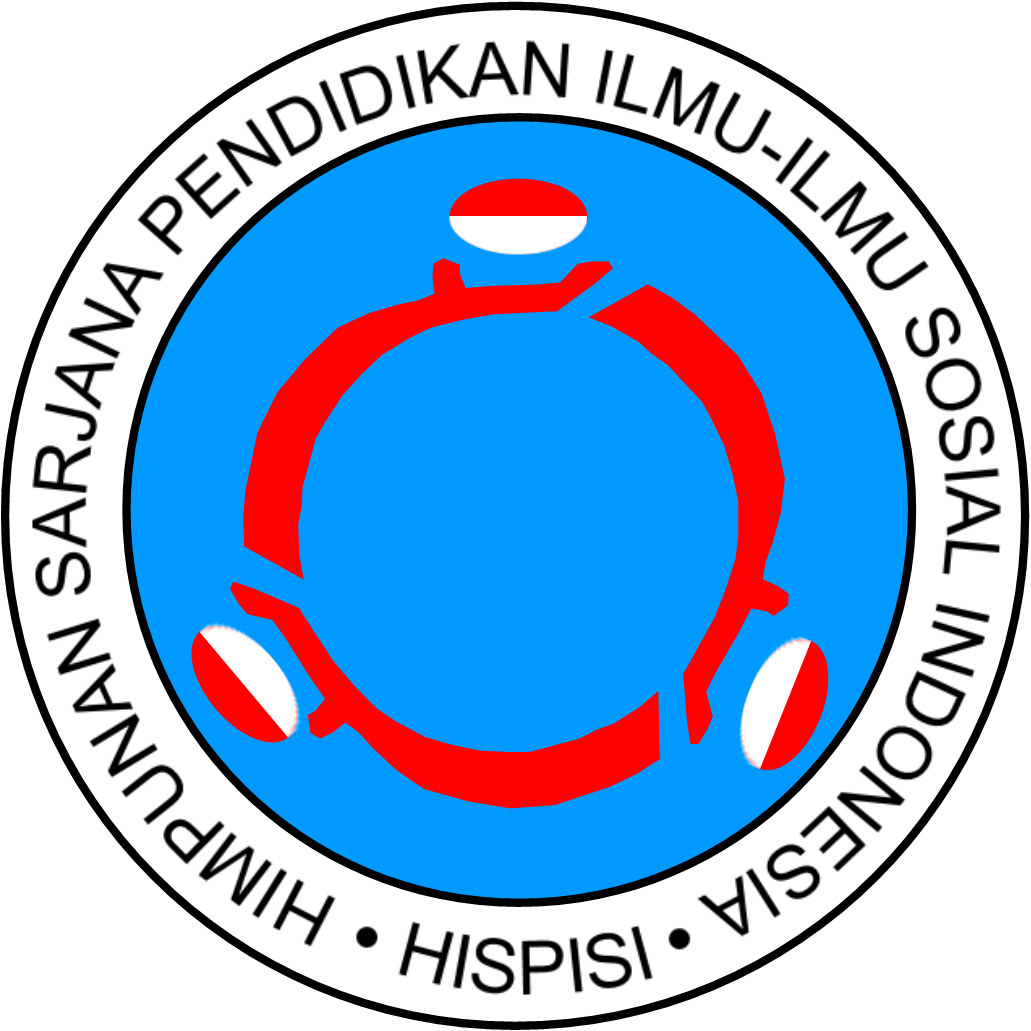Hashtags and Identity Campaigns as Conversational Themes within the Salmine Fanbase: A Netnographic Study of Salma Salsabil’s Fan Community on X
Abstract
Keywords
Full Text:
PDFReferences
Barbosa, B., & Carvalho, C. L. (2023). Hashtag activism by brand lovers: a netnographic study. International Journal of Sport Management and Marketing, 23(1/2), 44. https://doi.org/10.1504/ijsmm.2023.10055628
Baruah, A. (2024). The Impact of Computer-Mediated Communication on Relationships and Social Interactions. International Journal of Human-Computer Interaction, 1–7. https://doi.org/10.1080/10447318.2024.2442755
Braun, V., & Clarke, V. (2021). Thematic analysis: A practical guide. SAGE Publications
Bungin, B. (2008). Konstruksi Sosial: Media Massa Jakarta. PT Fajar Interpratama Mandiri.
Chakrabarti, P., Malvi, E., Bansal, S., & Kumar, N. (2023). Hashtag recommendation for enhancing the popularity of social media posts. Social Network Analysis and Mining, 13(1). https://doi.org/10.1007/s13278-023-01024-9
Chang, H.-C. H., Pham, B., & Ferrara, E. (2023). Parasocial diffusion: K-pop fandoms help drive COVID-19 public health messaging on social media. Online Social Networks and Media, 37–38, 100267. https://doi.org/10.1016/j.osnem.2023.100267
Devi, P. S., Geetha, R., & Karthika, S. (2020). Trendingtags—Classification & Prediction of Hashtag Popularity Using Twitter Features in Machine Learning Approach Proceedings (pp. 161–177). Springer, Singapore. https://doi.org/10.1007/978-981-13-8676-3_15
Guo, S. (2022). Return of Fandom in the Digital Age With the Rise of Social Media (pp. 216–233). IGI Global eBooks. https://doi.org/10.4018/978-1-6684-4515-0.ch013
Hutchins, B. (2020). How social media transforms sports celebrity and fandom. Journal of Sport and Social Issues, 44(1), 36–53.
Hills, M., & Black, D. (2021). Digital fandom: New practices in participatory culture. Journal of Fan Studies, 15(1), 1–17.
Hurova, I. (2024). Fan Culture: From Consumption of the Mass to Creation of the Popular. https://doi.org/10.32461/2226-3209.1.2024.302031
Kaplan, A. M., & Haenlein, M. (2010). Users of the world, unite! The challenges and opportunities of Social Media. Business Horizons, 53(1), 59–68. https://doi.org/10.1016/j.bushor.2009.09.003
Kozinets, B. R. V, Gretzel, U., Giardina, M. D., & Cannella, G. S. (2020). Chapter 21 : Qualitative Social Media Methods : Netnography in the Age of Technocultures. 1–24.
Jenkins, H. (2016). Fandom, participatory culture, and Web 2.0: A brief history. Convergence: The International Journal of Research into New Media Technologies, 26(5), 81–96.
La Rocca, G., & Artieri, G. B. (2022). Research using hashtags: A meta-synthesis. Frontiers in Sociology, 7. https://doi.org/10.3389/fsoc.2022.1081603
Mawardha, M. S., & Purnamasari, O. D. (2022). Aktivitas komunikasi pemasaran terpadu di akun fanbase twitter official 7bts update sebagai sarana loyalitas terhadap boyband bts. Perspektif Komunikasi: Jurnal Ilmu Komunikasi Politik Dan Komunikasi Bisnis, 6(2), 183. https://doi.org/10.24853/pk.6.2.183-197
McMahon, C., & Templeton, P. (2024). Introduction: Football without Fans is Nothing? (pp. 1–25). Emerald (MCB UP). https://doi.org/10.1108/978-1-83549-023-520241001
Naraine, M. L., Pegoraro, A., & Wear, H. (2021). #WeTheNorth: Examining an Online Brand Community Through a Professional Sport Organization’s Hashtag Marketing Campaign. Communication and Sport, 9(4), 625–645. https://doi.org/10.1177/2167479519878676
Nugraha, R. P., & Komsiah, S. (2023). Utilization Of New Media As Digital Fandom Among Korean Pop (K-POP) Fan Groups On The Social Media Platform Twitter. International Journal of Progressive Sciences and Technologies. https://doi.org/10.52155/ijpsat.v40.1.5584
Ohanyerenwa, C., & Clarke, J. L. (2017). Application for enhancing metadata tag uses for social interaction. https://patents.google.com/patent/WO2017218901A1/en
Reichenberger, I., & Smith, K. A. (2020). Co-creating communities: Fandoms in tourism spaces. Tourist Studies, 20(2), 166–181. https://doi.org/10.1177/1468797619874504
Regla-Vargas, A., Alvero, A., & Kao, G. (2023). The BTS Effect: How K-Pop Fandoms Reshape Sociopolitical Messaging on Twitter. https://doi.org/10.31235/osf.io/94nrm
Sandvoss, C. (2021). Fans: The mirror of popular culture. Popular Culture Studies Journal, 9(2), 123–140.
Saraswati, L. A. (2020). BTS ARMY’s #BTSLOVEYOURSELF: A Worldwide K-Pop Fandom Participatory Culture on Twitter. KnE Social Sciences, 423–432. https://doi.org/10.18502/KSS.V4I14.7899
Sharmila, K., Sathya, R., Suresh, L., & Vigneshwaran, C. (2024). The Evolution of Social Interaction Patterns in the Digital Age: Examining the Influence of Technology Mediated Communication. IOR INTERNATIONAL PRESS. https://doi.org/10.34256/ior243
Sulianta, F. (2021). Netnografi: Dasar dan Perkembangan Etnografi Digital.
Thurlow, C., Tomic, A., & Lengel, L. (2004). Computer mediated communication.
Yang, T., Zhu, G., & Wu, F. (2024). Participate in Philanthropy for Idols or Society? Fans’ Social Media Practices, Dual Identity, and Civic Engagement in Chinese Online Fandom. Social Media and Society, 10(2). https://doi.org/10.1177/20563051241261290
Zhang, C. (2024). The “Datafication” of Fan Culture in the New Media Environment. Lecture Notes in Education Psychology and Public Media. https://doi.org/10.54254/2753-7048/41/20240797
Zein, Z., & H, Z. (2025). Fostering Participatory Culture Through The Use Of #Noindomyatairport By BTS Army Fandom On Twitter. MEDIASI Jurnal Kajian Dan Terapan Media, Bahasa, Komunikasi, 5(3). https://doi.org/10.46961/mediasi.v5i3.1355
DOI: https://doi.org/10.17509/jpis.v34i2.80830
Refbacks
- There are currently no refbacks.
Copyright (c) 2025 Universitas Pendidikan Indonesia (UPI)

This work is licensed under a Creative Commons Attribution-ShareAlike 4.0 International License.















